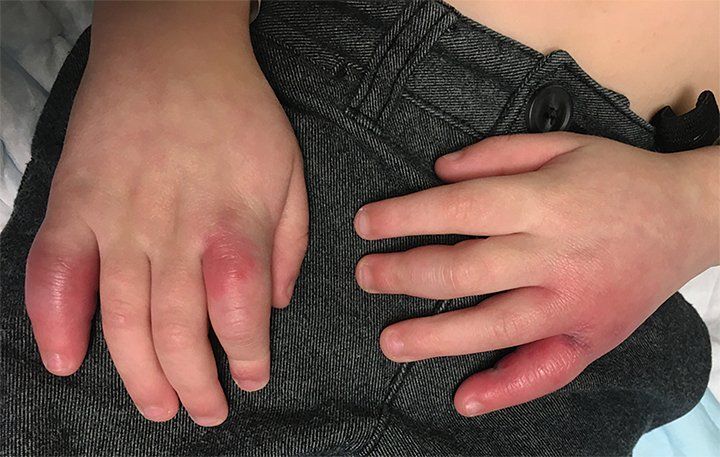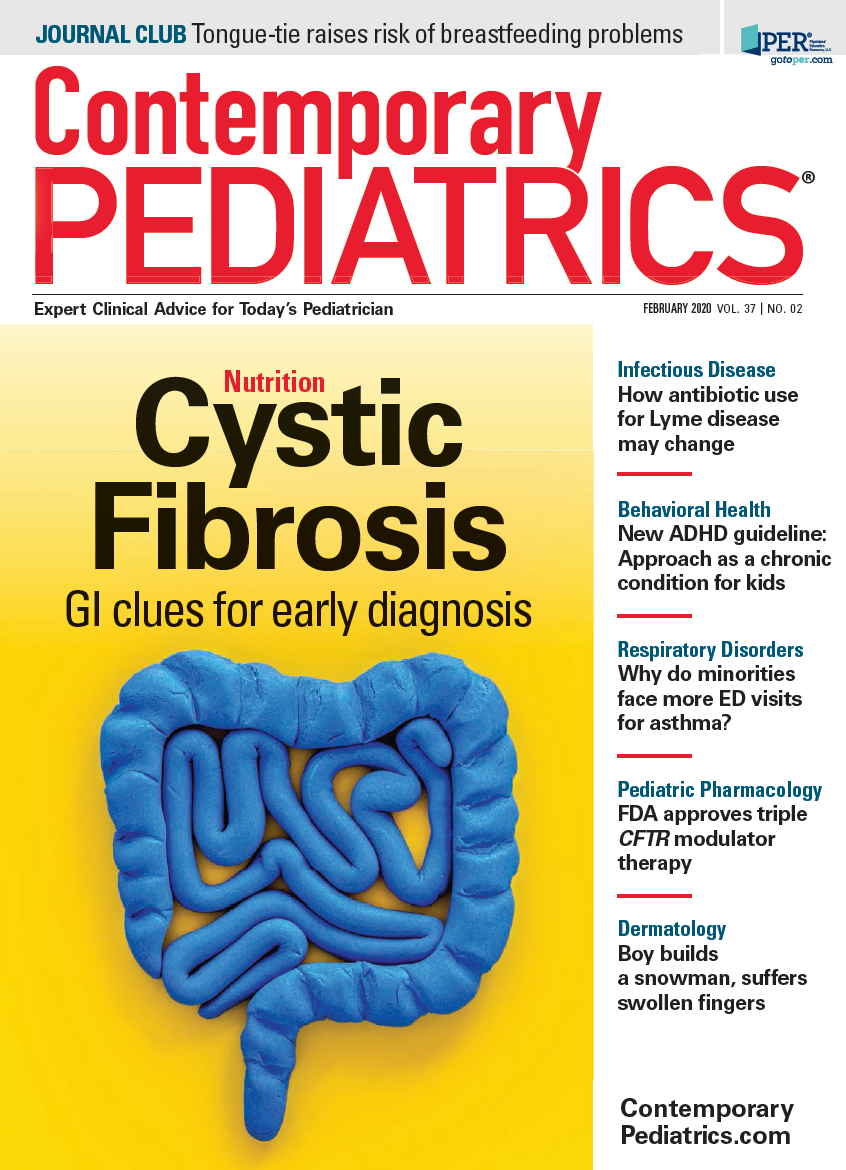Boy builds a snowman, suffers swollen fingers
A 4-year-old boy presents for evaluation with painful swollen fingers on both hands that erupted after he made a snowman with his siblings following a snowstorm. He complains that they are itchy and painful. What's the diagnosis?
Figure

Table

The case
A 4-year-old boy presents for evaluation with painful swollen fingers on both hands that erupted after he made a snowman with his siblings following a snowstorm. He complains that they are itchy and painful.
Diagnosis: Pernio
Discussion
Pernio, also known as chilblains, is a localized response to a nonfreezing cold, damp environment. The lesion in perniosis has been described as an erythematous or purplish swelling typically on proximal digits (fingers and toes), nose, or ears accompanied by pain, itchiness, and burning sensation (Figure). It also can appear on the calves and thighs, and lesions might ulcerate or form blisters. It commonly affects children and women, particularly those with low body mass index.1,2
Pernio is thought to occur because of abnormal cutaneous arteriolar vasoconstriction in reaction to cold temperatures leading to reduced blood flow. Further loss of heat is facilitated by increased conduction in humid conditions compared with dry air. Although not pathognomonic for pernio, histopathology will show edema of papillary dermis and a perivascular mononuclear and lymphocytic cell infiltrate with necrotic keratinocytes and a lymphocytic vasculitis.2,3
Pernio may be confused with more serious disorders such as leukocytoclastic vasculitis, lupus erythematosus, cryoglobulinemia, and cutaneous thromboembolism. Consequently, the range of possible diagnoses (Table) may lead to an unnecessary, intensive, and expensive workup consisting of multiple blood tests and skin biopsy. In 2014, a study from the Mayo Clinic proposed diagnostic criteria to guide clinicians in identifying patients with pernio before considering collagen vascular disorders and other cold triggered dermatoses. The diagnostic tool included fulfillment of the major criterion and at least 1 minor criterion:4
Major criterion:
· Localized erythema and swelling involving acral skin sites (body protrusions such as finger tips, knuckles, elbows, knees, etc.) for more than 24 hours.
Minor criteria:
· Occurs or exacerbates during colder months (between November and March).
· Dermal edema with superficial and deep perivascular lymphocytic infiltrate without features of lupus erythematous on histopathology.
· Response to conservative management-warming and drying of affected areas.
Management
Patients with pernio usually have good response to conservative management such as rewarming, drying, and, if tolerable, massaging affected areas. Smoking cessation is encouraged due to its known effects on vasculature. Topical steroids including triamcinolone may be used locally to reduce itching and inflammation and promote faster resolution of lesions. A thorough history is important to elucidate habits that led to inadequate warmth, and patients should be educated on proper attire and winter etiquette: eg, wearing insulating gloves and socks, and avoiding prolonged stay in wet clothes to prevent recurrence.2
For patients who might have a severe presentation or multiple recurrences of pernio, a dihydropyridine calcium channel blocker (CCB) such as nifedipine may be prescribed. The recommendation for CCB is currently not strong due to lack of data on the effectiveness and variable response in patients. However, benefits may include reduced severity of symptoms, shorter time to resolution of current lesions, and prevention of new lesions and/or recurrence.5
Patient outcome
The patient in this case was treated with topical triamcinolone 0.1% ointment sparingly twice daily for 5 days, and swollen areas were gently massaged and protected from cold. He was counseled to use warm protective clothing while playing outdoors, particularly on wet, cold days.
References:
1. Wolff K, Johnson RA, Saavedra AP, Roh EK. Fitzpatrick’s Color Atlas and Synopsis of Clinical Dermatology. 8th ed. New York: McGraw-Hill Education; 2017; section 7, 126.
2. Olin JW, Al Mahameed A. Pernio (chilblains). In: Creager M, Beckman J, Loscalzo J. Vascular Medicine: A Companion to Braunwald’s Heart Disease. 2nd ed. Philadelphia, PA: Elsevier/Saunders; 2013:613-617.
3. Brinster NK, Liu V, Diwan AH, McKee PH. Perniosis. In: Dermatopathology: High-Yield Pathology. Philadelphia, PA: Saunders/Elsevier; 2011:157.
4. Cappel JA, Wetter DA. Clinical characteristics, etiologic associations, laboratory findings, treatment, and proposal of diagnostic criteria of pernio (chilblains) in a series of 104 patients at Mayo Clinic, 2000 to 2011. Mayo Clin Proc. 2014;89(2):207-215.
5. Rustin MH, Newton JA, Smith NP, Dowd PM. The treatment of chilblains with nifedipine: the results of a pilot study, a double-blind placebo-controlled randomized study and a long-term open trial. Br J Dermatol. 1989;120(2):267-275.

Newsletter
Access practical, evidence-based guidance to support better care for our youngest patients. Join our email list for the latest clinical updates.